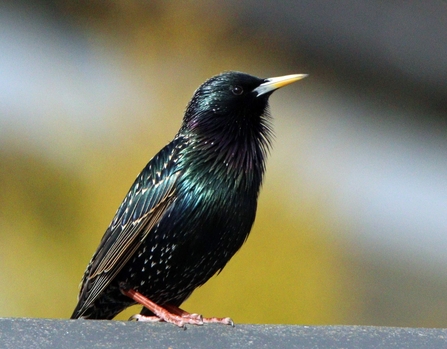Where to see starling murmurations
The audience gathers outside the visitor centre as the daylight fades and the evening chill begins to descend. A few warm-up acts keep us entertained – a goosander flying strong and high; a young male marsh harrier swooping down into the reeds next to the lake; flocks of woodpigeons flapping home to roost.
Then it’s time for the main event – the murmuration. The star performers start to arrive. The starlings are in small groups at first, heading in from the south east after spending the day feeding in the farming fields of Lincolnshire and North Nottinghamshire.
We spot a larger shape silhouetted ominously against the darkening sky – a sparrowhawk, threatening to disrupt the display and make the starlings dance to its own tune. Starlings are sweeping in much bigger formations now, but the sparrowhawk melts away, leaving them unharmed – for tonight, at least.


